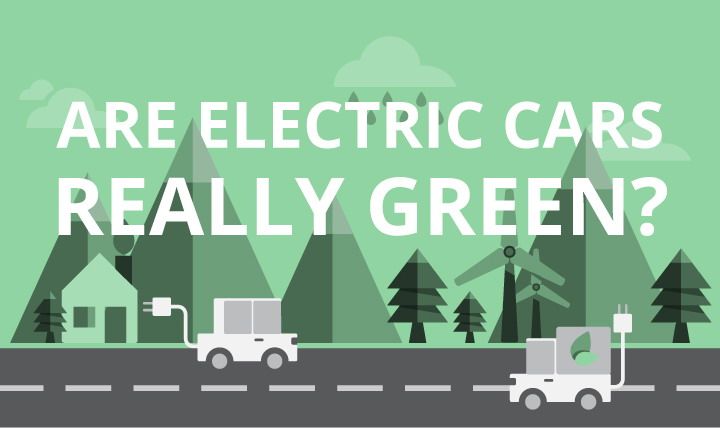When it comes to solving the world's energy problems, there’s definitely no silver bullet. Plenty of quick fixes have been offered, but in the end, fossil fuels are far too integral to the operational infrastructure of society to simply cast off in lieu of some alternative. However, many have viewed the electric vehicle->ke1030 as one potential solution to the problem of personal transportation without the use of gasoline. Seems simple enough, right?
Well, not exactly. Even though there’s no tailpipe, the energy to propel an EV still has to come from somewhere. Additionally, the process by which these cars are created is not exactly eco-friendly. By neglecting the gas pump, are we really helping the planet? This infographic examines that question, with consideration to some of drawbacks facing the latest green trend to hit Motordom.
According to the infographic, the average carbon produced during the manufacturing process for an electric vehicle, such as the Nissan->ke62 Leaf or Tesla->ke1842 Model S, is actually more than twice that of a conventional car. That means you’ll have to drive your EV thousands of miles before the emissions coming from the average gasoline-burner outpace the higher carbon cost of an EV. The batteries used in EV cars are also quite nasty, as they contain many rare and difficult to attain elements, like cobalt, which are associated with their own unique set of problems for the environment.
Now let’s look at where the juice to fill those batteries comes from. The modern electrical grid is powered by a variety of energy sources, most of which are fossil fuels. While renewables like solar and wind power are on the rise, the vast majority of the energy coming from your electrical socket is from coal and natural gas. That means that even if an EV has no tailpipe, it’s still creating carbon just by plugging in. Of course, this all changes in a country where renewables are more fully integrated into the overall electricity grid.
What do you think? Are electric vehicles all hype, or a necessary step to solving the world’s energy problems?
Click past the jump to find out how green electric cars really are.
Why it matters
It could be argued that the public’s current fascination with electric vehicles is slightly uninformed. Many think that by waltzing down to a dealership and picking up an EV, they are doing their part to save the planet. What many fail to recognize is that the electric vehicle didn’t spring from an Al Gore PowerPoint presentation, nor does it run on good intentions. These are still products of the modern world, which, for better or worse, is powered by resources that are limited and potentially quite harmful. Nor should it be argued that electric vehicles are necessarily a bad idea, either. EVs have their place, and when considering the problems we now face as a planet, it’s important to lay every option on the table. It’s very likely that electric vehicles are only one part of a much broader energy solution.


